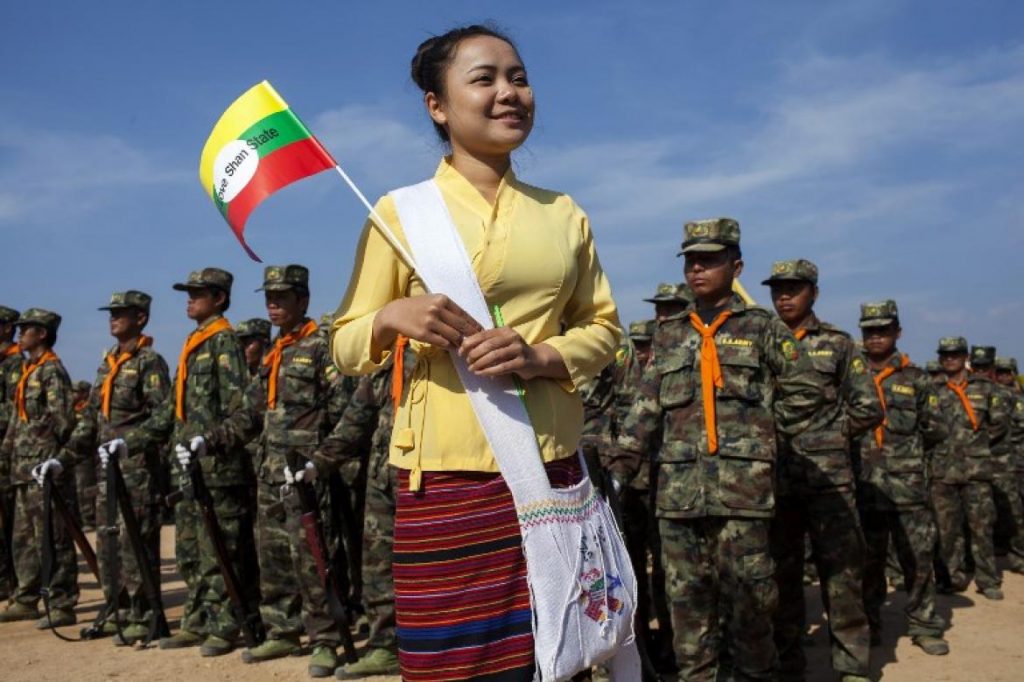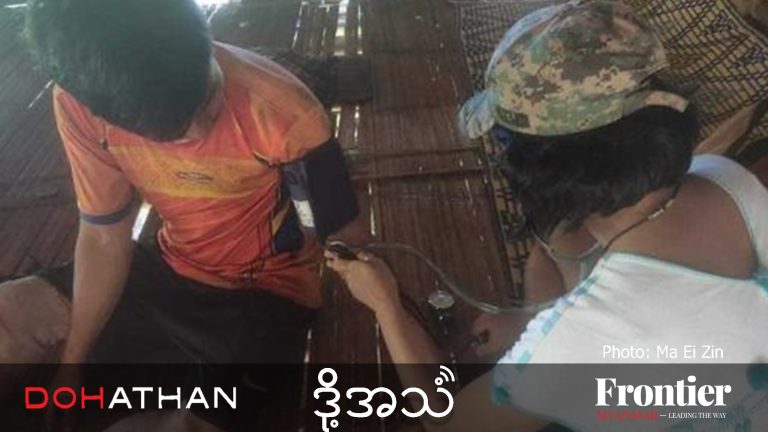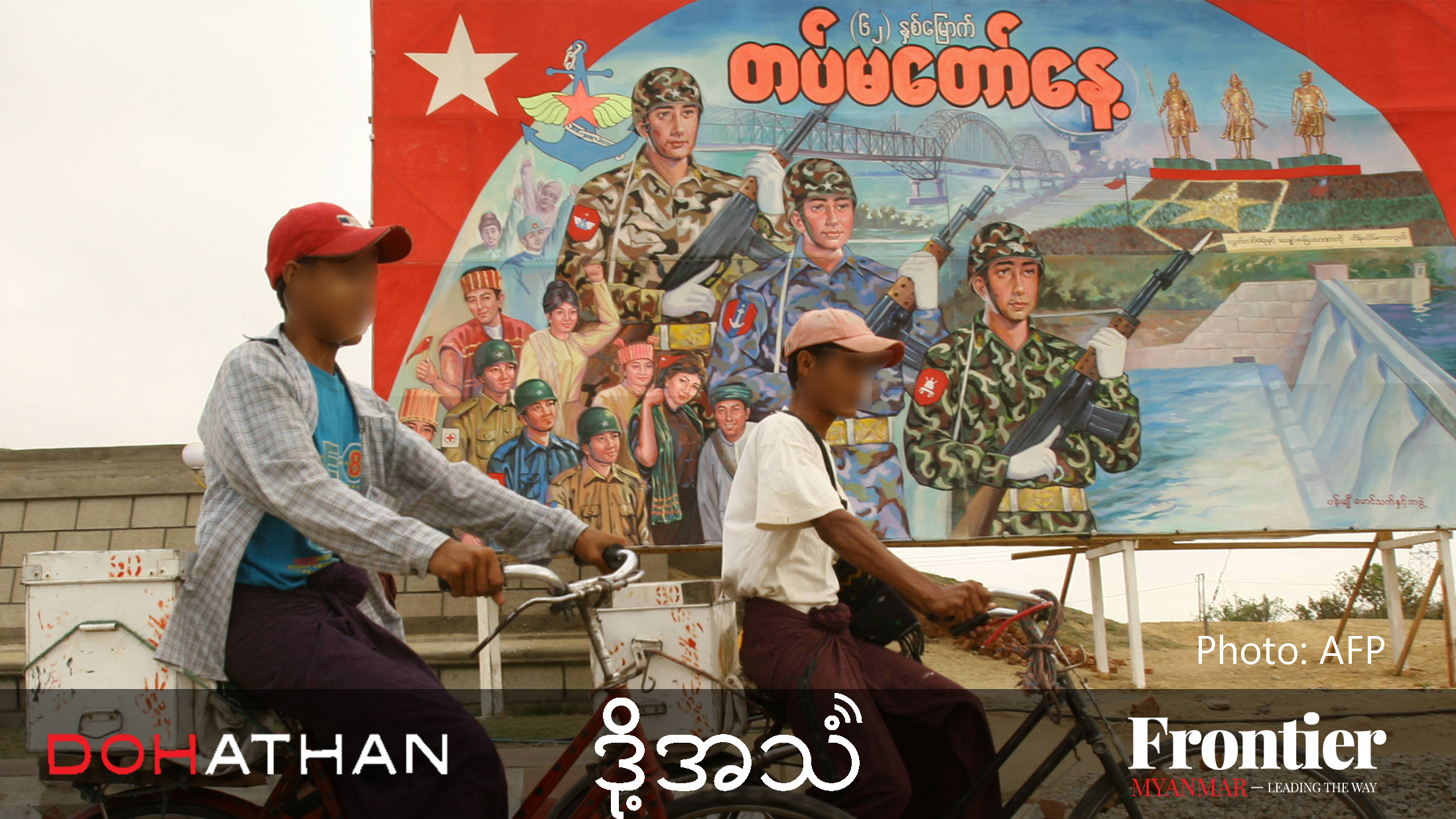Prolonged ceasefires and a lack of trust have created opportunities for non-state forces to build up their economic and military resources, adding further complexity to ongoing ceasefire and political negotiations.
By AUNG NAING OO | FRONTIER
Ceasefires are critical for bringing an end to hostilities. They can offer a reprieve for the soldiers on both sides, and be a lifeline for the civilians in conflict areas. Generally, they represent fragile stability in areas that have known mostly destruction and devastation.
In Myanmar, bilateral ceasefire agreements and the Nationwide Ceasefire Agreement are cases in point. They have brought enormous benefits to communities in conflict areas. Roads have been reopened and identity documents issued. Civilians in conflict areas have better access to healthcare, education, commerce and farming – things that are taken for granted in peaceful areas.
Ceasefires also enable communities that have been cut off by war to reconnect. Social cohesion can be rebuilt and, perhaps, a healing process can commence.
Further, ceasefires can pave the way for political solutions. This is the hope in Myanmar: that all sides can build on the platform of ceasefires to find political solutions to their grievances.
Support more independent journalism like this. Sign up to be a Frontier member.
However, protracted ceasefires can also create problems with significant policy implications. Prolonged ceasefires without political solutions create a Cold War-like situation. Unfortunately, in many ways this is unfolding in Myanmar right now.
Bilateral ceasefires signed between 2011 and 2013 with 14 ethnic armed groups have been in place for between five and seven years. Even the NCA is more than three years old. You could argue some ceasefires are even older; the original agreement with the United Wa State Army (UWSA) is already three decades old, dating back to 1989. Although the UWSA signed a new bilateral ceasefire in 2012, its original agreement never broke down.
There have been small clashes with or among ceasefire groups. But there has not been large-scale fighting of the kind seen over the past four years with groups that are yet to sign any agreement since 2011, such as the Ta’ang National Liberation Army (TNLA), Kachin Independence Organization (KIO) or the ethnic Kokang Myanmar National Democratic Alliance Army (MNDAA).
This is the good news when it comes to ceasefires. But while there has been little or no active fighting with ceasefire groups, on all accounts preparations for war have continued unabated. This is something that is rarely discussed in public.
This is understandable in the circumstances. When the war is not yet over, when talks are still continuing and when there’s a lack of trust, you will feel the need to fortify your defences. The unpredictability of the conflict dictates that you need to be ready to go back to war at any moment.
At least, this seems to be the case in Myanmar.
The existence of multifarious non-state armed groups does not help either. It’s one of the reasons why the Cold War-like situation has intensified in recent years.
This is not just about being ready to fight the Tatmadaw. Yes, the Tatmadaw has been accused of building new military camps in disputed or undefined ceasefire and conflict areas. But it’s also about maintaining the military, economic and political status quo in a neighbourhood jam-packed with heavily armed, non-state forces all competing for territorial control or expansion, for smuggling routes and for access to resources. One needs to demonstrate that its group is not weak and that it is ready to defend its territory.
Under these circumstances, acquisition has continued. Some groups, such as the UWSA and KIO, have weapon factories, which are the main source of weapons for themselves as well as their allies. In some cases, sophisticated weapons have also been acquired. As Myanmar has porous borders with its neighbours, it’s easy for non-state armed groups to purchase weapons as long as they have the money.
And money does not seem to be a problem.
With no active fighting, many groups have been able to focus on business, both legal and illegal. They also collect tax, which the government says is illegal and the groups say is legal because it happens in areas outside government control. In many cases, the taxation has itself become a lucrative source of revenue and areas of taxation have increased. In some cases, taxation has reached even to the large cities where businesses that operate in conflict areas are based.
Some non-ceasefire groups send letters to the banks, businesses and even government offices demanding they pay an exorbitant “tax”. What goes unsaid is that this tax is to ensure protection. Several banks in northern Shan State have been bombed; reportedly this was for refusing to comply with tax demands.
There are no figures for how much is generated annually by taxes in conflict areas. But as all non-state armed groups collect taxes, it’s estimated be in the tens of million dollars, if not the hundreds of millions.
The smuggling of precious stones including jade, timber, weapons: all of these are primary sources of income for many non-state armed groups, especially in northern Shan State.
Illicit drug production and trafficking is another major source of income in the conflict economy. A recent International Crisis Group report estimated that in Shan State alone the drug economy was worth US$40 billion annually. This figure represents more than half of Myanmar’s estimated GDP for 2018. Fingers have been pointed in all directions, including at militias allied with the Tatmadaw, as to which groups are actually involved in the drug trade. There is consensus though that the drug scourge has reached just about every corner of Myanmar.
In fighting a war, though, money is not enough; there is a constant need for manpower. So there has been an increased drive for recruitment. According to various estimates, the Arakan Army was thought to have around 1,500 soldiers in 2015. Now it boasts some 6,000 to 7,000. The TNLA was said to have 3,000 around the same time. Now they claim to have about 7,000 combatants. The KIO is believed to have manpower of about 10,000.
These are the groups that have not signed any truce with the government. So how about ceasefire groups? There are no exact figures available, so I’m using estimates by various observers.
The Restoration Council of Shan State-Shan State Army-South (RCSS-SSA-S) was believed to have around 6,500 combatants when it signed the NCA in 2015. Now their strength is estimated to be around 12,000. Likewise, the Shan State Progress Party-Shan State Army-North (SSPP-SSA-N) – a bilateral signatory – had around 4,000 in 2014. Now it is said to command an army of around 7,000 soldiers. The only group that is said to have seen a reduction in force size is the New Mon State Party.
To sum up, as the size of war economy grows, the fighting forces grow. By extension, concerns about one’s own safety in an area surrounded by well-armed groups grow. Perhaps necessitated by such fears, it is believed that even the National Democratic Alliance Army (NDAA), a bilateral signatory whose territory, Mong La, has been peaceful and prosperous, is said to have restarted military training.
This is the dark side of the prolonged ceasefires. It is hard to blame the armed groups. A similar trend has been reported elsewhere in the world where there are large amounts of resources to exploit and many non-state armed groups to compete with. With no political solution in sight, there is very little alternative. You could argue that such a situation is a natural occurrence in a prolonged ceasefire.
But we must also acknowledge its effects. It has created further suffering for civilians in conflict areas and also led to environmental destruction. It may not be obvious, but it has also complicated ongoing ceasefire negotiations. It has and will continue to adversely affect political negotiations, including over the democratic and federal principles that are to be the foundation of a future Myanmar. In the long run, it will complicate recovery efforts and negotiations on security reintegration.
On the one hand, it is absolutely necessary to maintain and strengthen existing ceasefires. On the other hand, it is absolutely necessary to address difficult issues during peace talks at the highest levels. Otherwise, there is a risk that the Cold War-like atmosphere will become a spoiler in the peace process.







